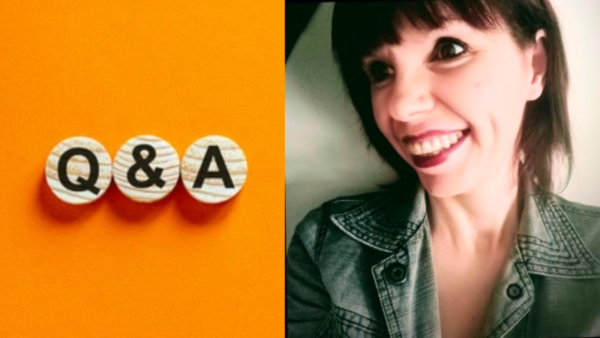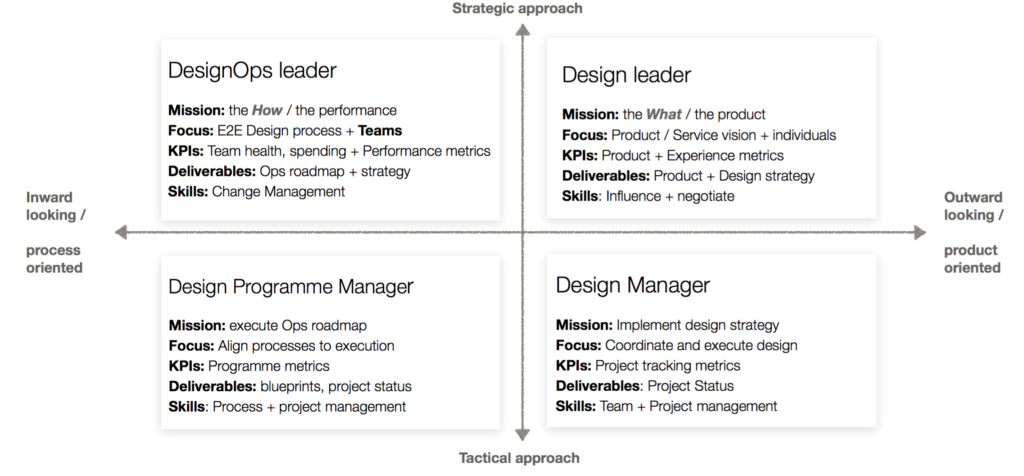We value your privacy
This website uses cookies to ensure you get the best experience on our website.
 Skip to main content
Skip to main content
This website uses cookies to ensure you get the best experience on our website.
We spoke to DesignOps expert, Patrizia Bertini, Head of Experience Design Operations at Truelayer about all things DesignOps: what it really is, how you position it at a company and why it is fundamental for efficient and happy design teams.

Being a naturally curious person, I’ve had a really varied, non-linear career. I’ve been fortunate to work extensively in the fields of accessibility, usability, academic research, and user research, before I eventually found my calling and became completely immersed – some might say “obsessed” – in Design Ops. I’m currently Head of Experience Design Operations at Truelayer.
I like to think of design operations as a pirate discipline of design because it’s all about learning the rules, and then breaking them to make an impact and improve things.
If we break it down, Design is about creating new ways to solve problems. As Steve Jobs said, “It’s not just what it looks like and feels like, design is how it works.”
“Design is all about finding solutions within constraints. If there were no constraints, it’s not design — it’s art.” – Matias Duarte, VP of Design at Google
In terms of Operations, this is all about transforming resources and data into desired goods, services, or results. These are purpose-driven transformations that aim to create and deliver value to the customer. In this context, the customers are design teams, design leaders, and the business.
To put the two together, Design Operations is about transforming the way that design is executed to create value for all the stakeholders and the business.
DesignOps is an internal-focused function that applies a system thinking approach to understand how design teams operate. Its ultimate goal is to identify opportunities and to create business benefits through improved spending and operational performances.
DesignOps is a crucial link between designers and senior stakeholders. All too often, designers don’t use business language, and the business doesn’t “speak design”.
As organisations mature, the way they operate (the “how”) becomes as important as the product they produce (the “what”). For design leaders, the “how” requires an entirely different skill-set to deliver measurable business outcomes – and that’s where DesignOps is important.
Another of the core functions of DesignOps is to increase efficiencies in operations and spending. This aspect of DesignOps is of particular importance when you consider that, according to the Workfront Report 2020, designers spend up to 60% of their time doing non-design-related tasks. Studies have also found that, on average, office workers in the UK are productive for less than 3 hours per day.
One of the biggest challenges for people in DesignOps is how to position themselves within the business. More specifically, it can be difficult to identify whether someone is a design leader or a DesignOps leader.
The best way to distinguish one from the other is to think about each role’s perspective.
Design leaders focus on the “what” – the product. They are always looking outside the business – looking at things such as:
Their deliverables include product and design strategies, and their core functions in the business are to influence and negotiate with senior stakeholders.
DesignOps leaders are responsible for the “how” – the process. While a design leader looks outside the business, a DesignOps leader looks – you guessed it – inside the business. They focus on:
They have a strategy on how to execute the experience and how to ensure that the product delivers on its expectations.
One of the biggest responsibilities a DesignOps leader has is to successfully manage change. Remember, design is about transforming reality, so change management is one of the most important skills that a DesignOps leader needs to possess.
“design is about transforming reality, so change management is one of the most important skills that a DesignOps leader needs to possess.”
I find the below graphic really useful to distinguish between the roles:

DesignOps’ goal is to generate quantifiable value for the business, its design leaders, and design teams, through the transformation and optimisation of end-to-end design processes.
The best way to think about what DesignOps people do is to separate the field into 3 key areas: business, workflow, and people.
From a business operations perspective, the DesignOps remit includes:
These duties are all aimed at delivering value through increased efficiency.
Expectedly, DesignOps also has a large focus on the workflow and design operations within a business.
This includes:
DesignOps seeks to enable and empower designers to do their best work by giving them the tools they need, and by embedding the processes that allow them to focus on design.
Another large part of DesignOps is managing the human element. After all, designers are people, and like everyone else, they will produce their best work when placed in the optimal working environment.
DesignOps people operations include:
Efficacy is all about doing the right things. The focus is on the right behaviours, for example:
Efficacy is all about creating the right behaviours because the right behaviours create efficiency and have a material effect on the business value.
While efficacy focuses on instilling the right behaviours, efficiency is about doing things the best way.
Efficiency is quantifiable and it is measured by numbers, percentages, and ratios, that provide an objective measurement of impact and results through per cent variations and relative delta. Efficiency is not a qualitative and subjective estimate, and it is not measured by adjectives or verbal descriptors.
DesignOps improves efficiency by addressing quantifiable measures such as:
Inefficiencies aren’t always obvious or even visible. For example, something as straightforward as a lack of written procedures, inadequate tools, or missing templates, can have a significant negative impact on delivery times, work/life balance and ROI.
The effects of inefficient design operations reach well beyond just the design team – this affects the entire business, both in terms of quantifiable losses as well as damaging the culture within the business.
“The effects of inefficient design operations reach well beyond just the design team.”
Every design team has inefficiencies. Acknowledging that there are invisible inefficiencies is the first step towards efficiency. My advice is:
Remember – at its core, DesignOps is a transformational discipline that practices change management to ensure that the improvements are adopted and have the expected impact.
For this reason, DesignOps applies System thinking on the top of Design thinking, because improving efficiencies within a design team may well lead to inefficiencies elsewhere in the business. This changes the dynamic, and while some problems are solved, new ones can arise.
By adopting a system thinking methodology, and by taking a continuous improvement approach, DesignOps is a core function of any business that seeks to improve, progress, and innovate.

